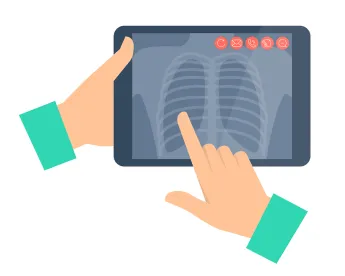On February 9, 2018, President Trump signed into law the Creating High-Quality Results and Outcomes Necessary to Improve Chronic (CHRONIC) Care Act of 2017, landmark legislation that significantly expands Medicare reimbursement for telehealth services. Passed as part of the larger Bipartisan Budget Act of 2018, the CHRONIC Care Act attempts to improve outcomes for chronically ill patients. Much praised were the specific sections paving the way for greater use of telemedicine within the Medicare program in the following four areas:
First, starting January 1, 2019, Medicare patients with end-stage renal disease (ESRD) who are receiving home dialysis may receive monthly ESRD-related visits via telehealth, provided that they also receive face-to-face visits every three months. Whereas Medicare currently generally only pays for telehealth services that are provided to patients in either a county outside of a Metropolitan Statistical Area (MSA) or a rural Health Professional Shortage Area (HPSA) located in a rural census tract, these geographical restrictions will no longer apply to monthly ESRD-related telehealth visits. Furthermore, the Medicare requirement that the patient be in an authorized "originating site" in order to qualify for reimbursable telehealth services will also not apply. The current list of permissible originating sites are the offices of physicians or practitioners; hospitals; critical access hospitals; rural health clinics; federally qualified health centers; hospital-based or critical access hospital based renal dialysis centers; skilled nursing facilities; and community mental health centers. Under the new law, ESRD-related telehealth services may also be provided in the patient's home.
Second, the CHRONIC Care Act similarly waives the general Medicare geographic limitations and the prohibition on the provision of telehealth services to the patient in the patient's home with respect to the provision of telehealth services by certain accountable care organizations (ACOs). Effective January 1, 2020, fee-for-service beneficiaries in any geographic location within the country who are assigned to an applicable ACO may receive telehealth services while in their place of residence.
Third, the legislation seeks to increase "convenience for Medicare Advantage enrollees through telehealth" by allowing Medicare Advantage plans to provide certain telehealth benefits beginning in plan year 2020. These benefits may include Part B services that are identified as clinically appropriate to furnish using electronic information and telecommunications technology when a physician or practitioner providing the service is not at the same location as the plan enrollee.
Fourth, the Act expands the use of telehealth for stroke patients. Beginning in 2019, telestroke services will be eligible for Medicare reimbursement regardless of the geographic location of the patient. Any Medicare patient with stroke symptoms arriving in a hospital would be able to receive consultation via telehealth.
There is great hope that these expansions will modernize the Medicare program, improve the health of chronically ill patients, and reduce costs to Federal health care programs. If these hopes come to fruition, the CHRONIC Care Act will certainly herald continued growth of telemedicine.




 />i
/>i

